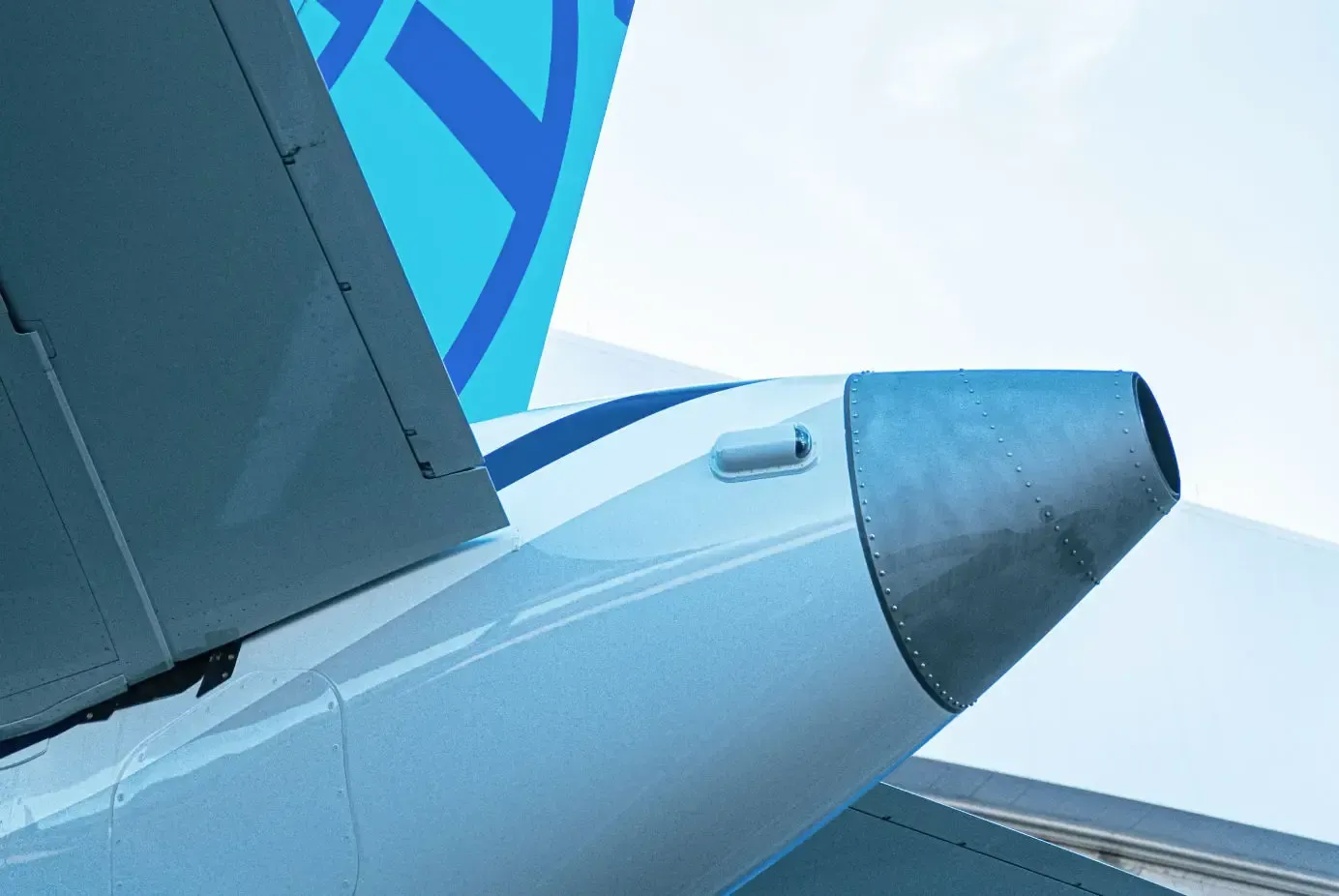
What Is an APU on an Airplane? Everything You Need to Know
An APU, or Auxiliary Power Unit, is a small gas turbine engine that provides power to an aircraft while it is on the ground. Learn more about the function and importance of an APU on a plane.
Table of Contents
Modern airplanes require a lot of electricity and compressed air to operate. When the aircraft is in the air, the aircraft's main engines produce the power and compressed air needed for the various systems onboard.
But when the plane is on the ground, at the airport gate, for example, having the engines on wears them. It is also expensive, unsafe, and noisy. So the electricity and compressed air the aircraft needs must come from somewhere else. The aircraft's APU takes care of that.
This article reviews what an APU is and what it does. We also touch on whether an aircraft can fly without an APU and what happens if it fails during flight.
What is an APU?
An APU (Auxiliary Power Unit) is a small jet turbine installed inside the aircraft's tail cone, which drives a smaller generator and air compressor. When the APU is in operation, it produces electricity for the aircraft's many systems and "bleed air" (essentially compressed air) to start the aircraft's engines and for the cabin's air conditioning system.
The pilots start the APU using the aircraft's internal batteries. When in operation, the APU makes the plane self-sufficient with the electricity and compressed air it needs until the main engines take over. Thus, the aircraft is not dependent on ground support equipment, such as an external power supply, external air conditioning units, and engine starters.
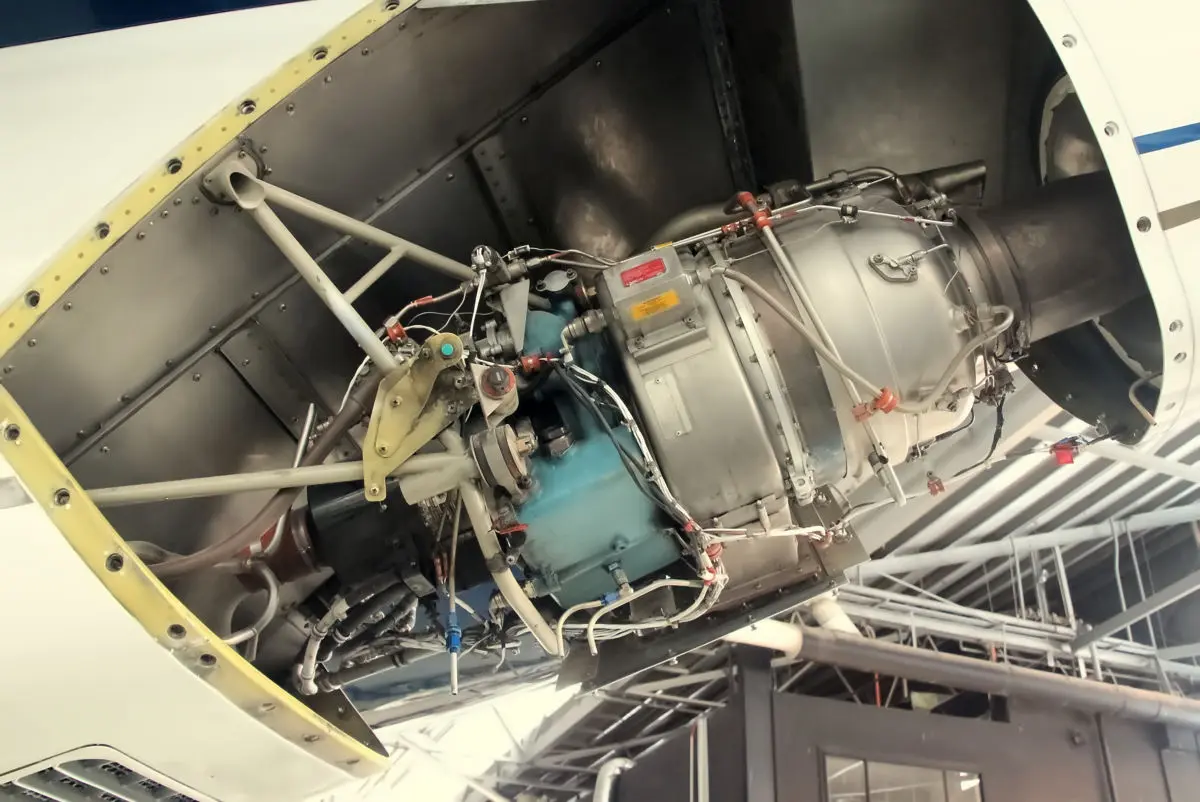
If the APU is approved for in-flight operation, it can act as an additional power source in the event of engine loss. The aircraft's jet engines each drive a generator. Without the engine running, the engine loses its ability to generate power. In that case, the APU can take over. In the event of an engine failure, the APU can also be used to try to restart the failed engine using the compressed air (called bleed air) that the APU produces.
All large, modern commercial aircraft have an APU, typically in the aircraft's tail. You can often see the exhaust hole from the APU when looking at the aircraft's tail cone.
Although an APU works somewhat similar to a jet engine, it is not the same. An APU does not produce thrust and cannot be used for propulsion.
What Does an APU Do on a Plane?
Providing Power on the Ground
The APU can run while the aircraft is on the ground and the main engines are off, for example, when boarding passengers. The APU will drive a generator that produces electricity for the aircraft's numerous systems, like the cockpit instruments, the passenger cabin air conditioning system, and the passengers' overhead reading lights.
The aircraft's engines can fulfill the same function, as they also produce power, but they cost more to run. An external power supply, where an electric cable is inserted into the aircraft, is also possible, but it is more practical that the aircraft itself can generate the necessary energy.
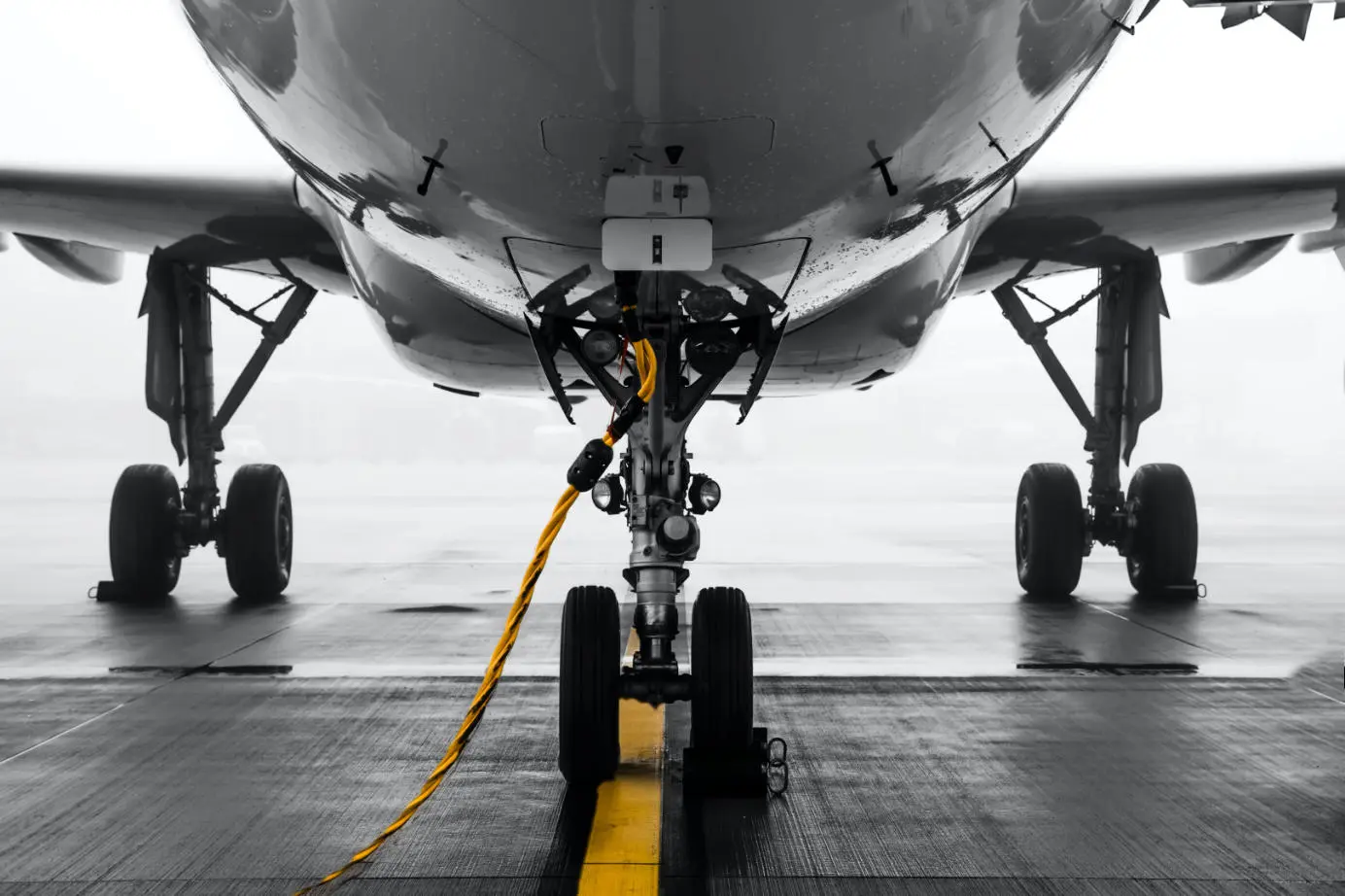
Starting the Main Engines
For a jet engine to start, the blades need to turn at a certain speed. To start the rotation of a stationary jet engine, "bleed air" from the APU turbine (basically just compressed air) is used. The bleed air passes through tubes from the APU to the engine. The pressure pushes the jet engine blades into motion, and when they reach a certain speed, the engine's combustion can begin. The engine is then running on its own. The bleed air supply from the APU is then closed.
Afterward, the other engine is started, either by the APU or high-pressure air from the engine already running. The latter, called "cross bleed," is also used to restart a failed engine.
Can a Plane Fly Without an APU?
A modern airliner can easily fly without an APU. When the plane is in the air, the APU does not run. During flight, the aircraft's electricity and air pressure come from the aircraft's main engines and not from the APU. As mentioned above, the APU is only used to produce electricity and bleed air when the aircraft's main engines are off, and the plane is stationary on the ground.
However, the APU can be used in flight. If one of the engines fails in the air, the pilots can use the APU to try to restart the engine using the air pressure generated by the APU. The APU can also supply the aircraft with electricity if the main engines fail.
What Happens if APU Fails in Flight?
Nothing happens if an aircraft's APU fails in flight because it is not running - An aircraft's APU is usually not in operation when the plane is in the air. The APU is mainly used to supply the airplane with electricity and air pressure on the ground. The pilots turn off the APU when the aircraft's main engines are running, as they also produce both electricity and air pressure. Therefore, there is usually no reason to have the APU running when the aircraft is in the air.
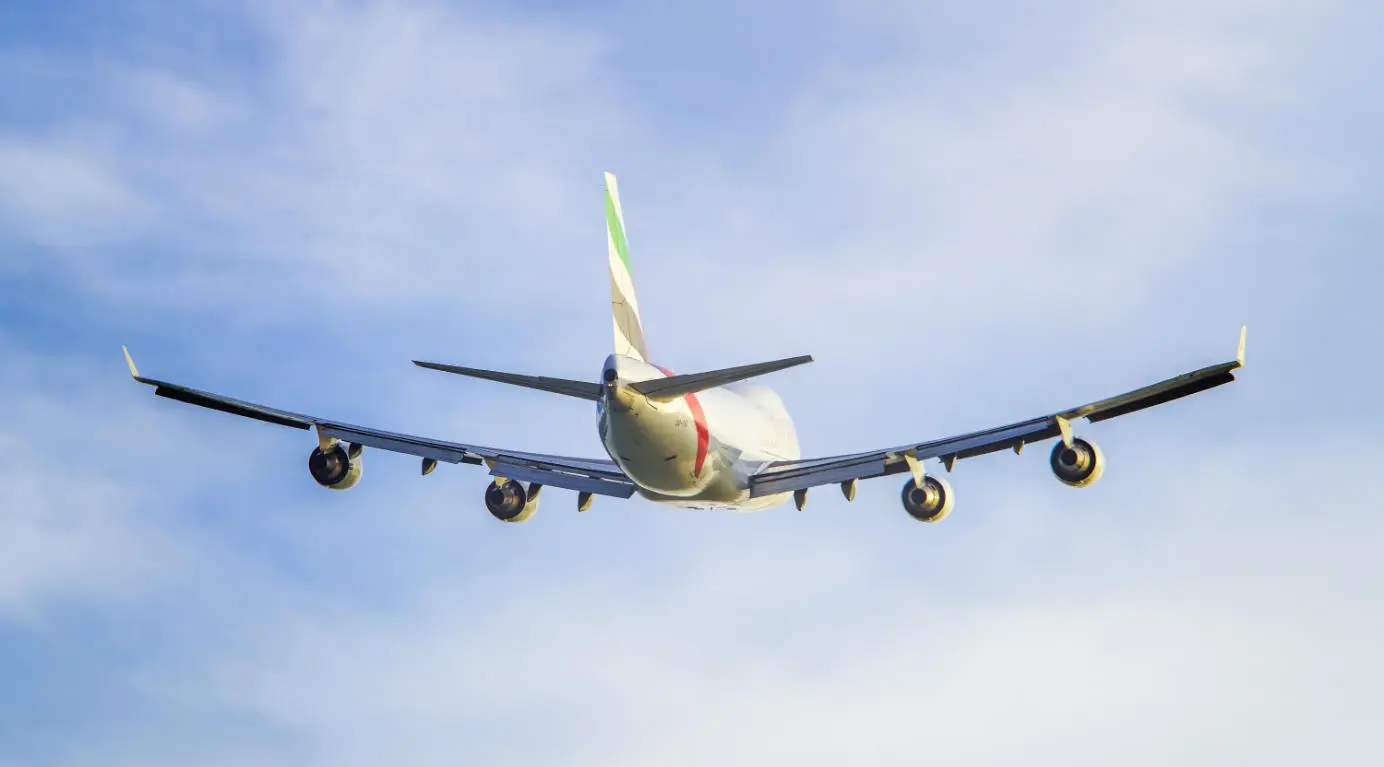
If the APU doesn't work when the aircraft is on the ground, the plane must have electricity and air pressure from elsewhere. If that is the case, an external compressor can supply pressurized air, and an electrical cable can power the plane like a regular electrical outlet. In most cases, however, airlines will not put an aircraft with a failed APU into service.
Do All Planes Have an APU?
Most larger commercial aircraft have an APU on board - also many smaller regional aircraft types. In turboprop aircraft, only the large models have an APU due to weight considerations on the smaller turboprop aircraft.
One of the modern aircraft that does not have an APU is the ATR 42, a regional turboprop aircraft built by Franco-Italian ATR. Despite lacking an APU, the ATR 42 may be independent of ground equipment, as one of its two propellers can remain active and generate power while on the ground.
To save weight, the famous supersonic Concorde had no APU. The engineers designed the Concorde to be as light as possible and intended it for well-equipped airports with good external power sources.
Why Is the APU Located in the Tail?
So, why is the APU located in the aircraft's tail when it is used to start the engines, relatively far away from it? Why not place it closer to the engines?
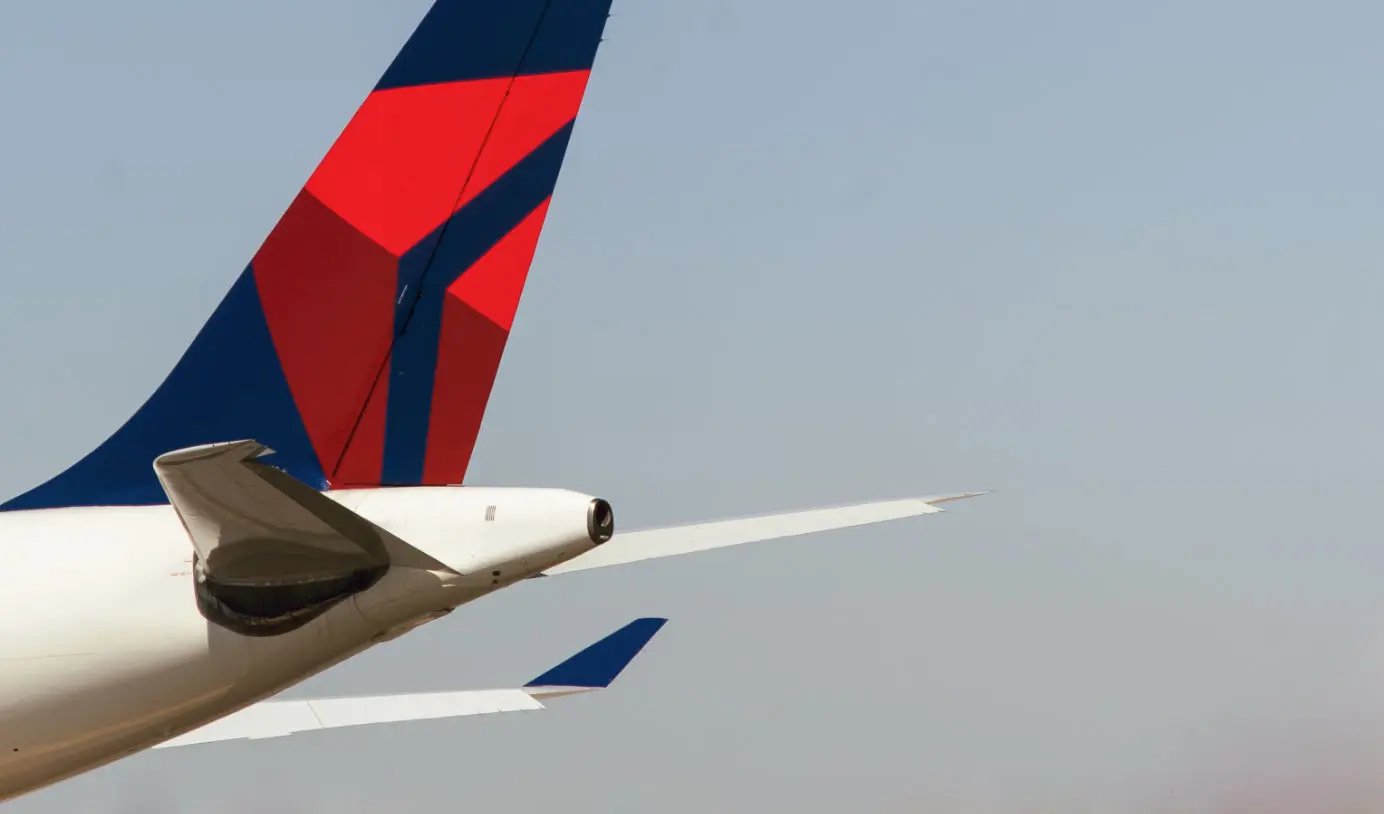
Aircraft manufacturers place the APU in the aircraft's tail (close to its black boxes) because it does not take up passenger, cargo, and fuel space. In addition, it is best to keep the APU at a reasonable distance from the ground crew.
The pressurized air that the APU supplies to the engines are under such high pressure that the physical distance to the engines from the APU makes no real difference.
A Short History of the APU
With modern jet aircraft, the spread of APUs took off, but aircraft designers have used them for decades. Several military aircraft in both the First and Second World Wars had some sort of APU installed, although not all were based on the same principle as the modern ones.
During the First World War, the British "Coastal" airships used by the Royal Navy used a form of APU to power the craft's radio. One of the first "real" fixed-wing aircraft with APU was the British Supermarine Nighthawk, an anti-airship fighter.
In World War II, several American aircraft had an APU. The well-known Boeing B-29 Superfortress is a good example. Unlike the modern turbine-based designs, the B-29 APU was based on a relatively common internal combustion engine, as we know them from cars.
When the jet age began and jet-powered airliners became more common, most aircraft types came without an APU. Many consider the Boeing 707 the first successful jet airliner of the jet age, and in the beginning, it had no APU. Some 707s had them installed later.
In 1963, Boeing launched the Boeing 727, becoming the first jet-powered airliner with a gas turbine APU. It was a sound decision by Boeing's engineers because, with an APU, the 727 could use smaller airports without ground equipment, which aircraft without an APU are otherwise dependent on. It helped make the 727 very successful.
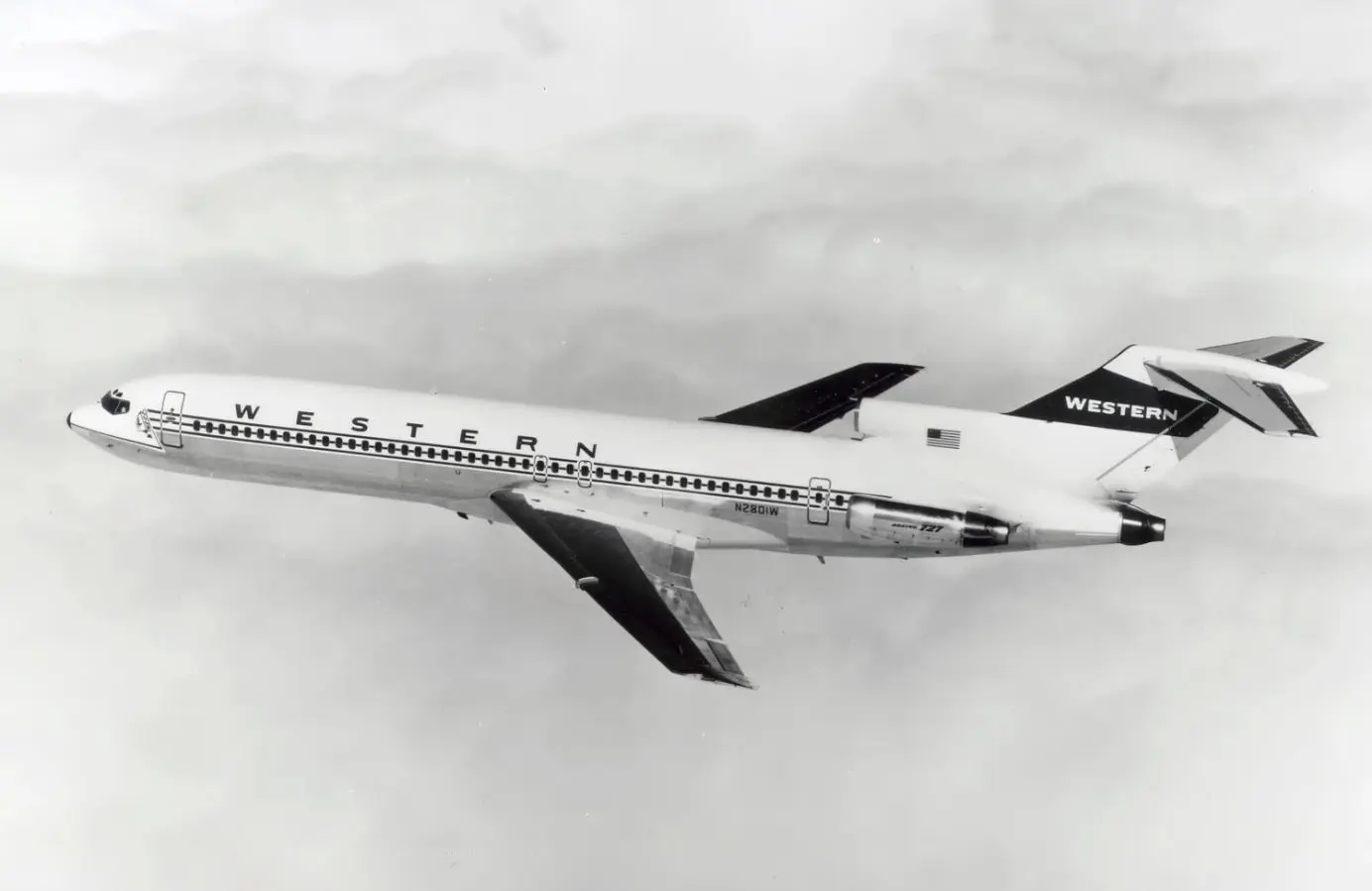
Summary
An APU, or Auxiliary Power Unit, is a jet turbine that produces power and compressed air (called bleed air) for an aircraft when the aircraft's main engines are off. Therefore, aircraft mostly use APUs when on the ground, like during passenger boarding.
The plane's APU provides air pressure to start the jet engines. It also runs the plane's air conditioning system and supplies electricity to its many systems. Once the aircraft's engines are on, they take over, and the pilots turn off the APU.
The concept of an APU goes back to the First World War. The first jet-powered passenger aircraft with APUs helped spread aviation, as they did not depend on whether the airport had the necessary ground support equipment.
Also read:
Planenerd Newsletter
Join the newsletter to receive the latest updates in your inbox.






